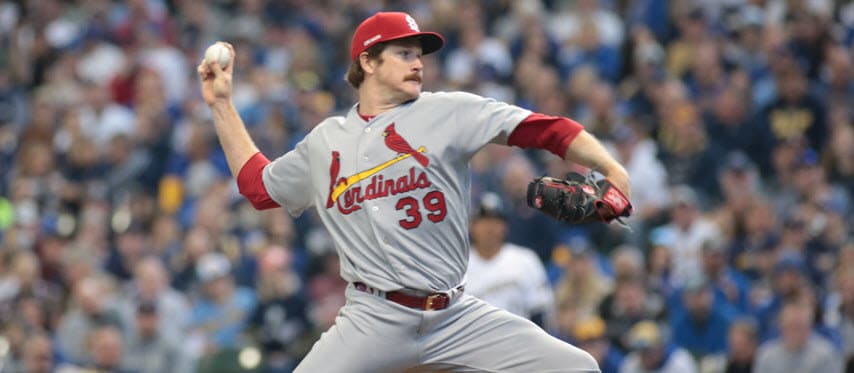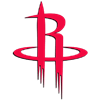Playing favorable matchups has always been a part of successful fantasy baseball strategy, but I feel like the importance of identifying those good matchups is intensifying. Baseball has been trying to create more parity, but the results suggest it isn't working. The better teams, usually those with more money, are better, while the weakest teams are borderline awful. The more often you can get your pitchers facing those bad teams, the better. A favorable matchup doesn't always work out. A bad team can occasionally jump up and bite you – we always call it "even a blind dog finds a bone sometimes" – but the odds are definitely in your favor.
Matchups can, and will, mean making choices. Is a good pitcher against a mediocre team a better option than a mediocre pitcher going against a horrible opponent? There are degrees of "good" and "mediocre," but in the past I probably would have opted for the "good" pitcher. Bad teams typically weren't that bad. Today, I'm not so sure.
Let's start by identifying the best teams for your pitchers to face. These are the "have nots" of MLB. Interestingly, the Nationals make the top target on my list despite them having Juan Soto, one of the best hitters in the game. The simple fact is there is little else to fear in their lineup, meaning he won't see many strikes. The Reds and Cubs might have been higher on the list if it weren't for them playing in hitter-friendly
Playing favorable matchups has always been a part of successful fantasy baseball strategy, but I feel like the importance of identifying those good matchups is intensifying. Baseball has been trying to create more parity, but the results suggest it isn't working. The better teams, usually those with more money, are better, while the weakest teams are borderline awful. The more often you can get your pitchers facing those bad teams, the better. A favorable matchup doesn't always work out. A bad team can occasionally jump up and bite you – we always call it "even a blind dog finds a bone sometimes" – but the odds are definitely in your favor.
Matchups can, and will, mean making choices. Is a good pitcher against a mediocre team a better option than a mediocre pitcher going against a horrible opponent? There are degrees of "good" and "mediocre," but in the past I probably would have opted for the "good" pitcher. Bad teams typically weren't that bad. Today, I'm not so sure.
Let's start by identifying the best teams for your pitchers to face. These are the "have nots" of MLB. Interestingly, the Nationals make the top target on my list despite them having Juan Soto, one of the best hitters in the game. The simple fact is there is little else to fear in their lineup, meaning he won't see many strikes. The Reds and Cubs might have been higher on the list if it weren't for them playing in hitter-friendly parks, so give them a little extra credit when they are on the road. Note, even though the Rockies aren't that scary, with warmer weather, their home park is still a volatile place.
- Washington Nationals
- Oakland Athletics
- Cincinnati Reds
- Chicago Cubs
- Pittsburgh Pirates
- Kansas City Royals
- Detroit Tigers
- Colorado Rockies (away from Coors Field)
Now we'll focus on what I feel are the worst teams for your pitchers to face. They all have a few things in common. They have a lot of talent throughout their lineup, making them dangerous even when a couple of big sticks have an off day. You will find a nucleus of big bats with enough protection to force pitchers to pitch to them and they are explosive. Your guy might appear to be on cruise control, and all of the sudden, there's an explosion resulting in an ugly inning. It might seem odd having a .500 team on this list (Boston), but collecting a W against them could destroy your ERA.
- Los Angeles Dodgers
- New York Yankees
- Houston Astros
- Boston Red Sox
- New York Mets
- Toronto Blue Jays
- Philadelphia Phillies
- Colorado Rockies (in Coors Field)
You might ask what makes a good matchup pitcher:
I thought about it for a minute, and my choice for a pitcher who profiles well as a matchup pitcher is Miles Mikolas of the Cardinals. He's not an ace but rather a middle-of-the rotation type. There are several factors that help his case. First, Mikolas is a strike thrower who can routinely get deeper into games. He's just an average strikeout pitcher, but he generates a lot of weak contact and benefits greatly from excellent defense behind him. And, the Cardinals are capable of providing good run support.
Okay, that fits the description of a lot of mid-level arms. What sets him apart is the NL Central. Take a look at the matchup target list. Almost half (three) of those weaker teams are in the NL Central, meaning Mikolas will have more outings against them. That's one reason he was an inexpensive target for me on draft day. I also targeted Cal Quantrill of the Guardians who frequently faces Detroit and Kansas City. Those extra positive matchups can potentially make a good draft day bargain an exceptional value. Conversely, a pitcher with a similar profile who pitches in the AL East might prove to be difficult to find good spots for activation.
Formulating a Plan:
Your ability to actively play matchups will depend a lot on a few league parameters. You need roster space to carry a couple extra starting pitchers, and/or liberal free-agent access (your matchup pitchers basically become streamers). Obviously, you want to avoid pitchers who simply aren't very good – they can get torched by weak-hitting teams. However, there may be pitchers on the waiver wire or via trade who have artificially inflated peripherals including poor results against those teams you want to avoid but acceptable results against the weak teams. I'm not suggesting you bench your top-of-the-rotation starters – they need to be in your rotation pretty much every week – but you might be able to improve your overall pitching numbers with a couple judicious adds.
Some Notable Rotation Ramblings:
- One highly regarded prospect is up. Edward Cabrera of the Marlins looked good in his initial starts, but I'm not without reservations. There is no question he has electric stuff, but he also can have trouble finding the strike zone. I am prone to grabbing him to see if the control is better, but there is pretty significant risk involved.
- Unfortunately, another big arm might be out of the mix. At the top of my kid's list, Baltimore's Grayson Rodriguez, suffered a lat strain at Triple-A and won't be back until September, at the earliest. The O's have no reason to rush him back, so there has been speculation he won't return at all in 2022. That's my guess.
- Continuing with injury/rehab notes, Cardinals' ace Jack Flaherty is progressing well and should make his next start this weekend at Double-A. I'm a huge fan of his, and if the shoulder woes are behind him, he should make a huge impact for his fantasy owners going forward. A late June return seems possible.
- I mentioned a few guys with higher ceilings who may not be quite ready yet, but the Rays' Shane Baz is getting close to returning from the elbow problems he experienced this spring and he could be productive as soon as he steps on the mound. He checks all the boxes and is likely to perform at a high level.
- The Mets are scrambling in an attempt to get their starting rotation back together. Tylor Megill may be returning this weekend, and he reportedly sat in the upper 90s during a recent rehab outing at Double-A. He's not top-of-the-rotation but he'll no doubt help a team that is winning despite all the pitching injuries.
- I know he's not a big-name drawing card, but Houston's Jake Odorizzi can be fairly productive when he's healthy and everything is clicking. Currently he is still throwing bullpens and will likely require a rehab assignment, so his return is not imminent, but with that team behind him he's worthy of consideration.
Endgame Odyssey:
The Rangers are still limping along with Joe Barlow and Matt Bush trying to close out games. They aren't the answer, and Texas could potentially be a playoff contender. If they don't feel Jose Leclerc can step in, don't be surprised if they look outside. The A's tried Lou Trivino (not good) and more recently Dany Jimenez (struggling lately), so I think we could be getting closer to A.J. Puk getting his audition. Teams are looking high and low for bullpen help. The Cardinals may be easing Ryan Helsley into more ninth-inning work. He has received a few chances but has only pitched back-to-back days once this season. Earlier this week, Milwaukee's Josh Hader blew a save, allowing two solo homeruns to the Phillies. The two earned runs were the first he has allowed since last July. See, he is human after all. In the same game, Corey Knebel collected a save, but he loaded the bases with three walks before ending it. You have to be concerned with his recent and ongoing struggles. Trevor Rosenthal missed all of 2021 with TOS and hip surgeries, but he threw for teams earlier this week, and if he showed anything at all, someone is likely to take a flyer on him.







































